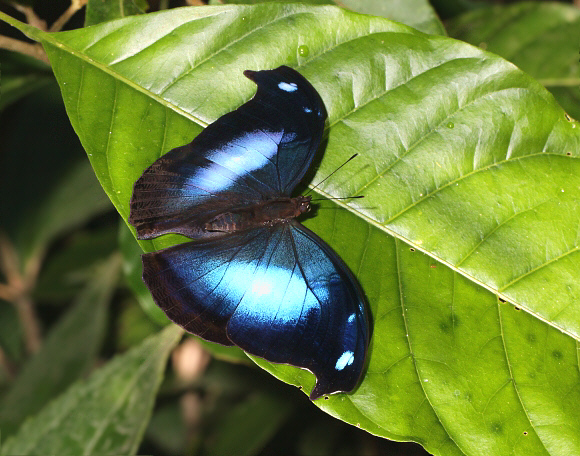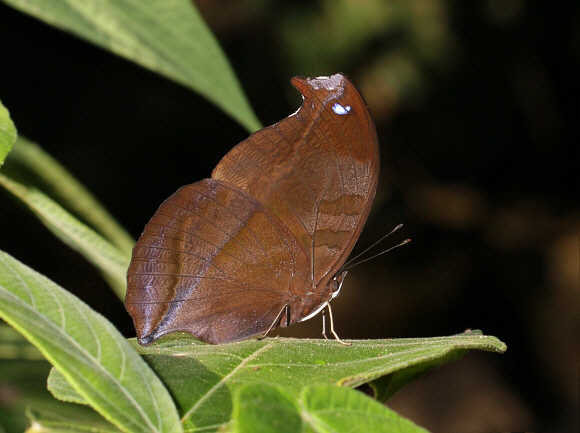
Introduction
The genus Napeocles contains just a single species jucunda. There is contention among taxonomists as to which tribe it should be placed in – Lamas for example places it alongside Anartia, Junonia, Hypolimnas and Siproeta in the tribe Kallimini, which also includes the Indian Dead Leaf butterfly Kallima inachus. The most recent revision of the Nymphalidae however, by Wahlberg in 2008 has Napeocles classified within the tribe Victoriniini, and lists only Kallima, Doleschallia, Catacroptera and Mallika in Kallimini.
Napeocles jucunda is found in Peru, Bolivia and south-west Brazil.
Habitats
This species inhabits rainforest at the foothills of the eastern Andes, at altitudes between about 400-800 metres above sea level.

Lifecycle
To be completed.
Adult behaviour
This large and most magnificent butterfly spends most of its time high in the canopy, but sometimes descends to settle on the lower foliage of trees. To see this species it is usually necessary to find a viewpoint from where the observer can look down onto such foliage from a high vantage point.
When settled the wings are usually held erect, displaying the “dead leaf” underside, but in the late afternoon when temperatures drop, the butterfly will sometimes bask with wings outspread.

